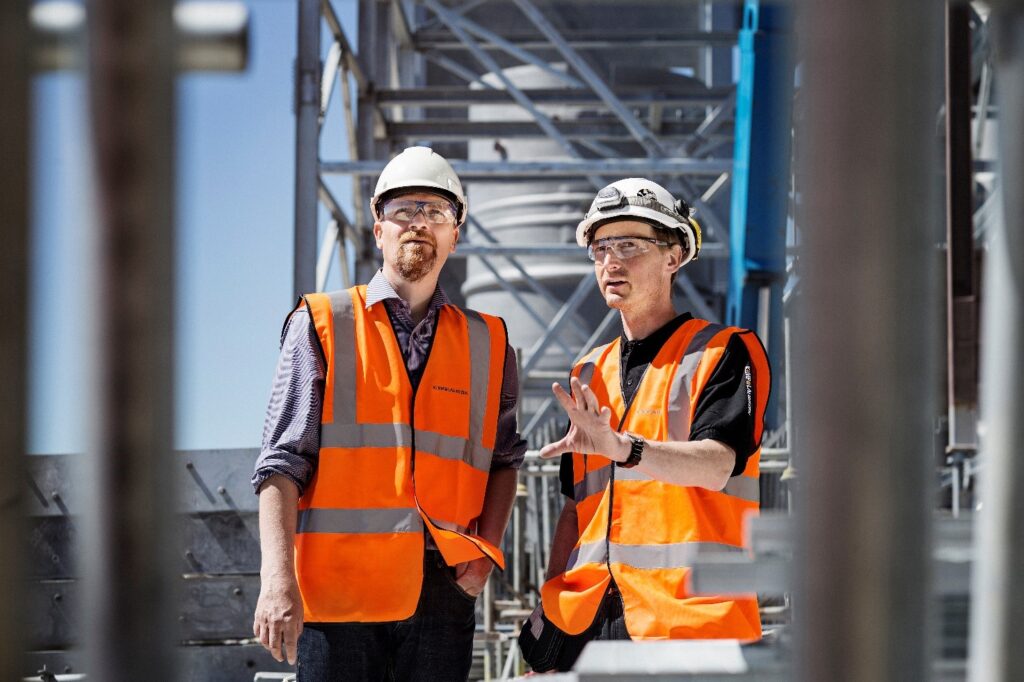The contractor Kemp and Lauritzen is working to develop a more flexible model for large-scale renovation projects. In addition to energy savings, the model will also take into account parameters such as user satisfaction and indoor climate.
Is the ESCO model too standardized?
When planning major renovation projects, the ESCO model is a well-known tool. ESCO is a model for financing energy renovation projects via energy savings, and has been applied to several major renovation projects in Denmark. In the initial stages of an ESCO project, specific goals for the energy renovation are set, which the contractor can keep up with during a given warranty period.
In the ESCO model, the contractor first prepares a thorough analysis of the building’s current energy consumption. The potential energy savings form the framework of a negotiation with the developer, after which one or more performance guarantees are given. If the guarantees are not fulfilled, the contractor must either improve their renovation project or pay the difference between the predicted and real energy consumption. However, if more energy is saved than was expected, the parties will typically share the profits.
According to Esben Jacobsen from Kemp & Lauritzen, ESCO focuses exclusively on energy consumption, a slightly too standardized solution. He believes that customers are increasingly demanding renovation solutions that are more flexible and based on customer needs. The solution is called Multi-Service-Contracting (MSC), with the goal of changing the perspective from achieving energy savings to addressing the client’s overall property challenges.
“Where ESCO was a large unified package offered to all customers in the same way, MSC is a good way to meet an increasing need for individual renovation solutions, with the customer at the center.”– Esben Jacobsen, Head of the ESCO department in Kemp & Lauritzen
It’s about more than just energy savings
The thinking behind MSC is reminiscent of ESCO, but in addition to energy savings, a number of other parameters are considered, such as indoor climate, operation and maintenance. This means that the developer can get a package solution that is able to solve several challenges in a property. Although it often takes extra resources to include more parameters in the renovation planning phase, that money can often be earned several times over during the life of the building or project.
During the initial phase of a renovation project, Kemp and Lauritzen begin with a thorough analysis of energy consumption, but also of both the experienced and measurable indoor climate parameters. The actual indoor climate of the building is recorded, measuring moisture, sound levels, CO2 levels and temperature, and these are compared with users’ experiences of the same parameters. The data from this analysis forms the basis for a conversation between the developer and the contractor, where they jointly agree on which parameters the customer wants to include in the project.
According to Esben Jacobsen, beginning with the individual customer’s needs and wishes is a way of securing the future of his business, a trend that is seen across industries.
“When we move in this direction, it’s because there is a need for it in the market. Our belief is that this is where the market is headed.” – Esben Jacobsen, Head of the ESCO department in Kemp & Lauritzen
Measuring user satisfaction
When measuring user satisfaction, Kemp and Lauritzen have partnered with the company CLIMAID, which allows users to judge the building’s indoor climate via an app. In this app, users can record how well the temperature or humidity of a room suits them personally. Although users’ ratings of the indoor climate serve as a starting point for negotiations with the developer prior to the renovation, the measurements do not stop there. Users continue to re-evaluate the indoor climate after the renovations, and often throughout the warranty period. The user satisfaction survey is a useful tool for the contractor, because it can help identify which problems the developer has and how they can be solved. The builder also benefits from ongoing user ratings as they provide an opportunity to follow up on whether the indoor climate improvements have had the desired effect for the users.

Photo: CLIMAID
Hard to offer indoor climate guarantees
Although it is important to include users’ perspectives in the process, Kemp and Lauritzen are still reluctant to provide guarantees on indoor climate or the perceived ease of use. This kind of project has not yet been trialed in Denmark, although several contractors are working to make their offerings more flexible and user-oriented.
“We are still working on developing how we technically implement these parameters.” – Esben Jacobsen, Head of the ESCO department in Kemp & Lauritzen
The fact that binding guarantees can be made for energy savings provides confidence for the developer, who gets fairly accurate forecasts for both energy savings and the time it takes to see financial returns. In theory, the MSC model should also be able to offer guarantees on other parameters, too, but providing performance guarantees on, for example, indoor climate, is in many ways more complicated than providing energy savings guarantees.
Kemp and Lauritzen emphasize that in order to work with the MSC model, it is important that a partnership develops between the builder and contractor based on trust, where both parties understand that the MSC model is still under development.
“We know from ESCO that it can offer really good results, but of course the model needs to be built right.” – Esben Jacobsen, Head of the ESCO department in Kemp & Lauritzen
On the right path
Although the MSC model is not yet the standard for major renovation projects, the increased focus on flexible solutions and the involvement of user surveys is a big step on the path to a more holistic model. Although there are no examples of guarantees beyond energy savings, there is a move towards offering customers holistic renovation projects that look at the interaction between the building’s technical installations.
“When you’re doing renovations today, you only look at the part you are renovating. You don’t think about the connection between a window, a ventilation system and a heating system.” – Esben Jacobsen, Head of the ESCO department in Kemp & Lauritzen
Like the ESCO model, which made its debut 12 years ago, according to Esben Jacobsen, the MSC model requires that all parties are informed about any new opportunities and willing to cooperate in new ways. However, due to procurement rules, the contractor must not influence supply itself. Therefore, the tender advisors play an important role when implementing the MSC model.
Whoever it is that takes the next step, it is crucial that there is an incentive to complete holistic renovation projects. The EU project EFFECT4Buildings works purposefully to create greater incentives to implement holistic models for renovation projects.
About EFFECT4buildings
About EFFECT4buildings
The project EFFECT4buildings is working to develop financial models that can give public building owners a greater incentive to implement energy renovations. Gate 21 – in collaboration with a number of Danish partners – will work with the concept of multi-service contracting, which focuses on several economies and needs in connection with the planning and execution of renovation and maintenance tasks. EFFECT4buildings is supported by the EU’s Interreg program.
About Kemp and Lauritzen
Kemp & Lauritzen is a Danish installation company with almost 2,000 employees across the country. They provide solutions in the fields of electricity, plumbing, ventilation and refrigeration and offer everything from everyday service to large contracts and unique specialties.
Kemp & Lauritzen has been providing complete technical solutions for both private traders and public customers for more than 135 years.













